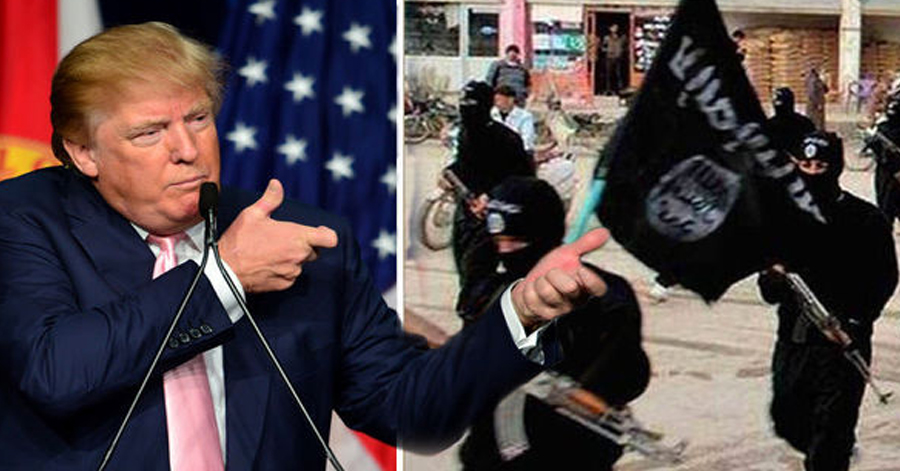President Trump resumed his battle Monday with the “Fake News” as he settled back into Washington after a “vacation” that turned into perhaps the most eventful stretch of his presidency.
On the heels of a tumultuous two-and-a-half weeks, the president is seeking a reset — one that will begin with a major announcement Monday night on his Afghanistan strategy. From there, he plans to hold a campaign-style rally Tuesday in Arizona.
But he started his White House workday railing once again against the news media, calling particular attention to a Fox News interview with Liberty University’s Jerry Falwell Jr., who defended the president amid the controversy over his response to the Charlottesville violence.
Trump urged the “Fake News” to listen to Falwell, and called the media “dishonest” in another tweet.
As he lashes out at the media, the president at the same time is dealing with the most solemn responsibilities of the office: deciding whether to send more troops into harm’s way. Trump on Friday met at Camp David with top generals and advisers to discuss the plan for Afghanistan.
He is widely expected Monday night to announce additional troops to the country, in an effort to beat back the Taliban, eliminate terror cells and truly end the longest war in U.S. history.
“I think he is going to give [his generals] a chance to prove what they want and their strategy,” former Trump deputy campaign manager David Bossie told “Fox & Friends,” in reference to the call for more troops, noting that Trump can adjust the plan in the future.
Trump is doing all this without the chief strategist who had been at his side since last summer, Steve Bannon. The fiery populist left the administration on Friday, returning to lead Breitbart amid expectations he’ll continue to weigh in on policy from the outside.
But Trump is no less the fighter than he was last week. While he was hammered in the press last week for his response to the Charlottesville violence, Trump tweeted overnight:
“Heading back to Washington after working hard and watching some of the worst and most dishonest Fake News reporting I have ever seen!”
On Tuesday, Trump will travel to Arizona with events clearly aimed at highlighting the president’s winning issues and appealing to his base.
Trump will first visit Marine Air Station Yuma, along the U.S.-Mexico border, giving him an opportunity to push campaign promises to build a Southern border wall and keep out illegal immigrants.
The event will be followed by a rally at Phoenix’s 10,000-seat convention center.
Trump won Arizona last year by fewer than 4 percentage points, a reminder of the state’s moderate tilt.
The president arrives after an extended working vacation at his golf club in Bedminster, N.J., and arguably his rockiest week in the White House — during which he denounced neo-Nazis but also said “both sides” bear responsibility for the deadly violence at an Aug. 12 rally in Charlottesville, Va., that was organized by white supremacists and where a counter-protester was killed.
But first, he delivers a formal address Monday night at 9 p.m. ET from Fort Myer in Arlington, Va.
Solutions for Afghanistan eluded the Obama administration and have not come easily to Trump.
The challenge is largely how to step up the fight against terrorism in a way that advances peace prospects — in large part because the Taliban have gained ground and show no interest in peace negotiations.
Months ago the Pentagon settled on a plan to send about 3,800 additional troops to strengthen the Afghan army, which is stuck in what some call a deteriorating situation with the Taliban insurgency.
Within the White House, questions persist about the wisdom of investing further resources in the war. Even if the administration decides to add more troops, it’s unclear whether they could get there quickly enough to make a difference in the current Afghan fighting season, which winds down in autumn.
The administration has said its Afghanistan strategy will be informed by a review of its approach to the broader region, including Pakistan and India.
The Taliban have long used Pakistan as a sanctuary, complicating efforts to defeat the insurgency in Afghanistan and stabilize the country. The region includes other actors who pose political problems for Washington, including Iran, which has influence in western Afghanistan.
Government forces also are battling an Islamic State affiliate that has carved out a foothold mostly in the east. Trump has vowed to crush ISIS, so its expansion in Afghanistan poses an additional challenge with no immediate solution. Just this week, a U.S. soldier was killed and nearly a dozen were wounded in combat with ISIS fighters.
The U.S. has about 8,400 troops in Afghanistan. Their primary roles are to train and advise Afghan forces and to hunt down and kill members of Al Qaeda and other extremist groups.
(via: Fox)


